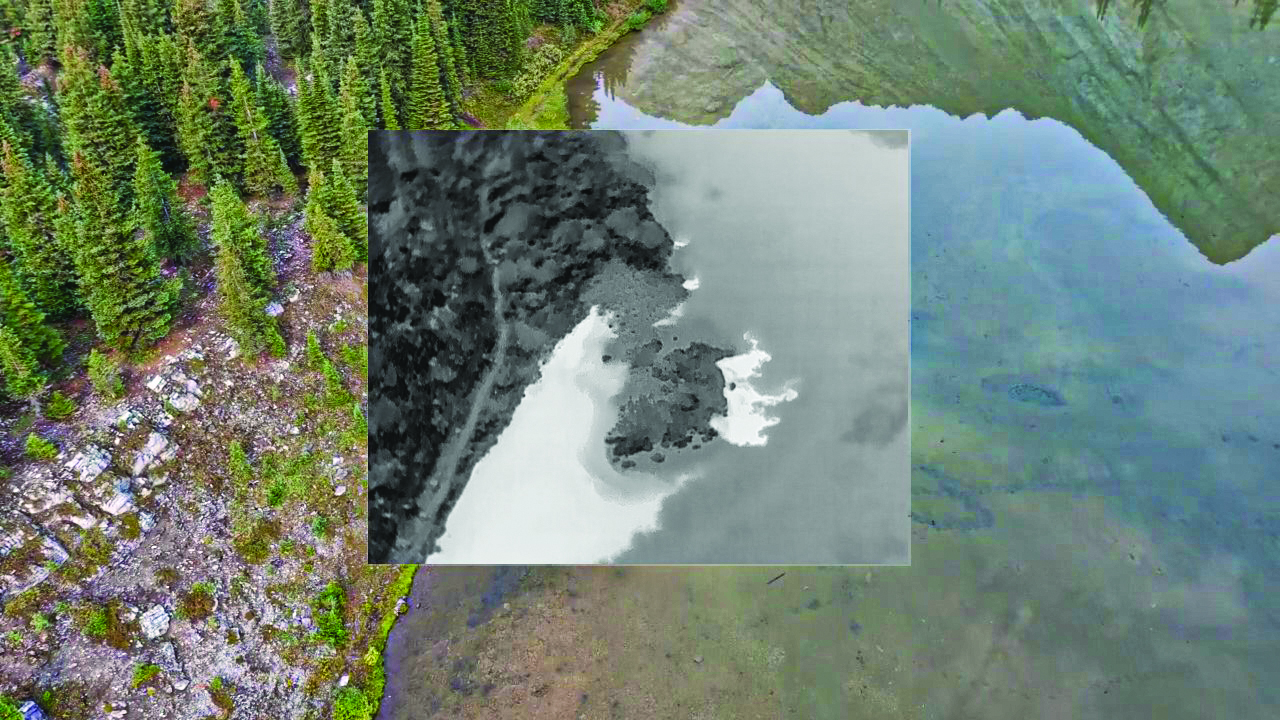
4 minute read
The Alpine Experience
Working to create exciting angling opportunities
Article by Ariana Tourneur
photos by Alberta Conservation Association
We already knew how incredibly popular westslope cutthroat trout (WSCT) angling is in Alberta from past angler surveys, and recent surveys show the same is true for high mountain lake fishing. This tells us adding fishing opportunities, especially novel ones, can only help distribute angling effort.
Under the High Mountain Lakes Project, biologists used environmental DNA and habitat assessments to determine if fish species were present in specific remote lakes—helping identify vacant lakes for establishing future WSCT populations.
What habitat variables are most important to look for in establishing self-sustaining WSCT populations? “Spawning and overwintering potential are key,” says Jason Blackburn, Alberta Conservation Association (ACA) biologist and project lead. “Since WSCT are almost exclusively stream spawners, we assessed lake outlets for suitable spawning substrates.”
Waterbodies with self-sustaining populations of WSCT or similar species, like golden trout, also serve as good indicators for what kinds of lakes to look for in establishing new WCST populations. “Since trout dig redds, they require small gravels typically no bigger than about 10 percent of their body length in diameter—these lakes may not actually require that extensive of a spawning outlet to support WSCT recruitment,” says Blackburn. “Examples in Alberta and in the literature suggest as little as 100–150 metres of outlet stream could be enough for WSCT recruitment in some high mountain lakes.”
In rare cases, WSCT will spawn on gravel shoals in lakes. In fact, the provincial brood stock for past and current recreational stocking of the species originates from shoal spawning fish in Job Lake—leading the team to also investigate shoal spawning potential.
When it comes to overwintering success, biologists consider upwellings (simply defined, when water wells up from the ground). In summer, upwellings tend to be colder than surrounding water temperatures; in winter they tend to be warmer, which is why they’re thought to stabilize winter habitats and offer refuge below the ice. Upwellings are closely linked to spawning and habitat selection by trout and charr but can be tricky to identify.

Enter thermal infrared drones! Flying along the perimeter of alpine lakes and their outlets helps biologists look for upwelling areas as revealed in the inset image below. This emerging tool also reveals an overhead view of the littoral and outlet habitats and substrates available for spawning.

While some lakes won’t be capable of supporting self-sustaining WSCT populations, they can still have great value for WSCT conservation—as stocking might also be another piece of the high mountain puzzle. “Stocking headwater lakes with non-native species for recreational fishing can pose risks to native WSCT populations, if fish move downstream into those watersheds,” says Blackburn. “On the other hand, lakes stocked with a native strain of WSCT pose no risk to downstream populations and only contribute to downstream fishing opportunities.”
Let the fish spawn on! Stay tuned for more high mountain updates as this project unfolds.

Lucky biologists?
Alberta Conservation Association biologists say working on alpine lakes is surreal, like walking into a painting. “If fish are present in the lake you are likely going to see them, either swimming in the clear shallows and outlet streams or feeding on the surface,” says Blackburn. “It’s not always tranquil though—it’s quite noticeable how late summer arrives and how harsh conditions can get in a hurry.”














